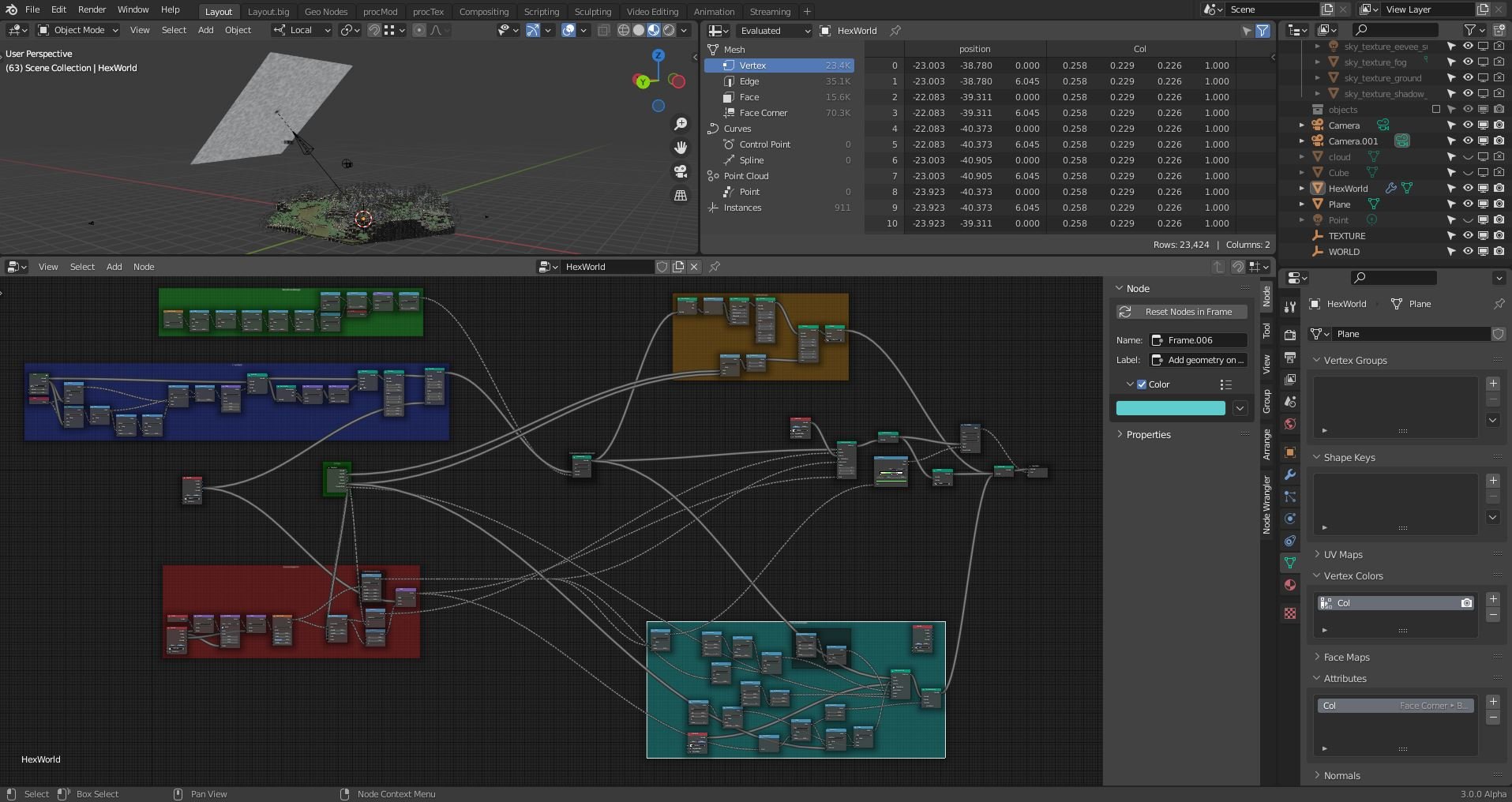Procedural/node-based modeling/animation.
Procedural modeling are shapes created by logic and math. Most hand sculpted/modeled shapes can be enhanced by applying parametrized details to the models. Procedural models also provide parameters for animation. It’s really all about being in control of the math and logic to make it serve your needs and that is one of my primary interests in computer graphics.
Below are some examples of procedural modeling/animation.
In the example below the wire-poles are modeled traditionally by creating and moving vertices around but the wires are procedurally attached to the poles and follow their attachment points without manual intervention.
The example below is completely procedural and the shape and colors are controlled by a few carefully designed parameters in the logic of the flow.
The tree like structure below is just a quick handmade simple extrusion with procedural bark-like details that is actual 3 dimensional geometry and not 2 dimensional displacement. Easily controllable curves are used to make the bark flow in the right direction along the branches. the mushrooms are also placed on the tree using a single curve and via math forced to attach to the geometry in a believable manner. The image is a Blender Cycles ray traced render of the scene from the animation further down below that was rendered in the Eevee “real-time” renderer.
Below is an example of a single curve used to drive the animation through a set of parameters that makes the mushrooms stick to the underlying mesh and animate.






